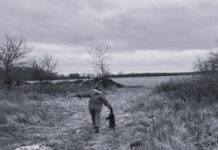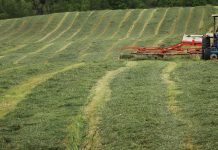Have you ever noticed how weeds come and go over the years? I recall the summer of the battle of Queen Anne’s Lace. We were summoned to the field where this pretty plant was threatening to take over the corn sprouts.
It was a beautiful spring day and my sisters and I were sent out with shovels and a hoe. We were told to get as much of the weed out of that seemingly endless corn field as we possibly could.
Being careful of the tender sprouts of corn, we walked and weeded. I remember that weed as being so strong in a very pungent scent, and we washed dozens of times after we finished our work, just hoping to rid ourselves of that odd odor.
The strange thing is that the next year, we hardly found Queen Anne’s Lace anywhere. Instead, we battled Shepherd’s Purse. Everywhere.
It just occurred to me the other day that we used to have lots and lots of red clover growing in the lawn. I rarely see it anywhere any more. Why is that?
Ironic. I find it a bit ironic that the weeds we battled over the course of my childhood are now of such interest to me. I am constantly reading and referring to one of my favorite books, The Book of Herbal Wisdom: Using Plants as Medicines by Matthew Wood. He tells that Queen Anne’s Lace, also known as “wild carrot,” has been used over the ages as a plant to aerate the blood, and it serves as a powerful diuretic.
It was used in the treatment of kidney stones, gout and rheumatism.
Lady’s Mantle came to prominence as a wound medicine, offering speedy healing. Sweet Leaf is referred to as a burn medicine that cannot only work on skin burns, but is said to “pull fire from the internal organs.”
The bane of country existence is the lowly burdock plant. How many hours have been spent pulling burs from dogs’ fur and the manes and tails of horses? I would imagine if we could all have those hours back, we would be youthful again!
It turns out this aggravating plant was used in the late 1700s to cleanse the liver and kidneys, sometimes saving lives. I feel certain those patients did not find the plant nearly so aggravating as the rest of us have over the years.
Have you ever fought the weed Spreading Dogbane? In the herbal world, it is known as Apocynum androsaemifolium, and is sometimes referred to as Werewolf Root. The leaves are more thin and overall smaller than Milkweed, with the branches more numerous, and the flowers tiny and singular, like petite pink bells.
Dogbane was once used by Indian medicine men to help people change from a bad life, filled with bad habits, to a good and healthy life. This may be where the term “Werewolf” came into play. It is said that the tincture from this plant helps to break the mold within a fellow, allowing him to shift from one life to another.
Interest. My on-going interest in plants began several years ago as I continued to search for answers to help my son reclaim his health. After having been bitten by a tick when he was 11, his once-healthy body battled pain and debilitating illness.
For a time, under our doctor’s supervision, we tried Cat’s Claw. Beginning with just one drop of the tincture, (marketed under the name “Samento” after an intensive Lyme study brought it to our attention) in a small amount of water each morning, Cort said he knew this must be very potent because he could feel the flush of fever within the hour.
He slept more than he had slept in a very long time. When we increased the dosage, the results were unbearable.
So, for several months, we stayed at just one drop each morning. Cort would describe those months as a blur of pain and illness, much like fighting a terrible flu without end.
With our doctor’s agreement to have us stop the Cat’s Claw, the relief was obvious. What I did not expect, though, was that in the days and weeks to come, Cort emerged stronger and healthier than he had been for several years.
He was almost 18 and had been far too ill to get his driver’s license. Ten days after ending the herbal treatment, he asked me to take him to the License Bureau. He passed his test on the first try. That would be the best summer he’d had since before the tick bite.
Proof. So, while there are many who would question the validity of this, I would certainly acknowledge that there is no proof of anything. But, I had watched my son suffer since age 11, and after having tried many, many courses of more standard treatments, this is the first one that seemed to have brought such measurable progress.
The latest plant to grab my attention is Teasel Root. This tall thistle is being used in tincture form by some who have suffered the debilitating fatigue and on-going pain of Lyme Disease with incredible success.
With a heavy load of college classes, Cort agreed to try it only if he could stop it at any point with no ill effects. He tried it and felt his symptoms worsen, which is honestly a good sign that it just might help him.
Until he has a break in the intensity of his coursework, though, he is setting it aside for now.
New focus. For the first time in my life, I have found myself looking at weeds with an entirely new focus. I spotted a bit of red clover growing in a weedy patch here on our farm. I had to look it up in my herbal book to learn that it is known as a “blood cleaner and a blood thinner, allowing the liver to remove metabolic waste products.”
I remember snapping the clover heads off of the stem in the heat of summer and popping the sweet-tasting flower in my mouth on a dare. Who knows? Maybe I am healthier as a result!
Earth gives us all sorts of gifts, many of which are mysteries to those of us who walk this land. If nothing else, I have learned that we know so little.
I have learned to approach each day with questions, remaining open for the answers that come our way.
Get 4 Weeks of Farm and Dairy Home Delivered












